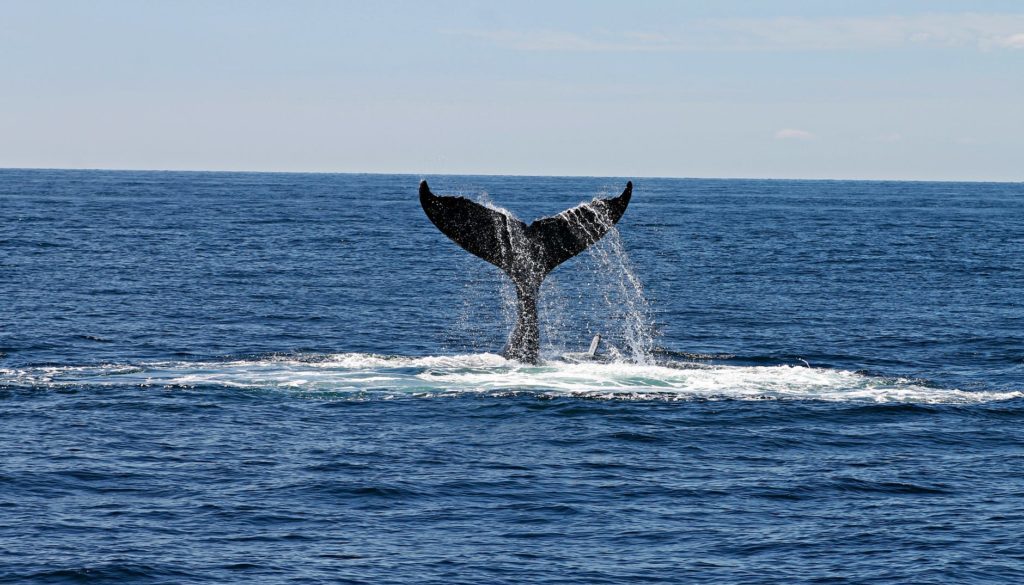You Can Now Weigh in on New Right Whale Protections
By Francine Kershaw, Natural Resources Defense Council
You can now make your voice heard on North Atlantic right whale protections. The National Oceanic and Atmospheric Administration (NOAA; also known as the National Marine Fisheries Service, or NMFS) recently announced a “scoping’ period” to solicit public comments on ways to reduce the risk of entanglement of North Atlantic right whales in trap and pot fisheries.
You can make your views heard at one of eight scoping meetings being held throughout August in Rhode Island, Maine, New Hampshire, and Massachusetts, or by submitting written comments directly to NOAA. The deadline for written comments is September 16.
Input received will inform NOAA’s upcoming rulemaking process that will amend the Atlantic Large Whale Take Reduction Plan to reduce the risk of serious injuries and mortalities to North Atlantic right whales, and other large whales, caused by entanglement in commercial trap and pot fisheries along the U.S. East Coast.
As part of this process, NOAA will prepare a Draft Environmental Impact Statement, in accordance with the National Environmental Policy Act, to analyze the potential impacts to the environment resulting from several different sets of protection measures called “alternatives.”
The scoping period is a critical time for you to help shape North Atlantic right whale protections for the coming years.
Entanglement in commercial trap and pot fishing gear is the leading cause of North Atlantic right whale deaths and is driving the species rapidly towards extinction. There are now only around 400 right whales left and less than a quarter of those are breeding females. At the current rate of decline, we will lose our iconic East Coast whale forever in just a few decades
NOAA has determined that the risk of serious injury and mortality resulting from entanglements needs to be immediately reduced by 60-80 percent to save the species. This is required by law.
NOAA is currently considering several potential measures to help them meet the 60-80 percent risk reduction target. The measures were developed with input from the “Atlantic Large Whale Take Reduction Team,” which presented its recommendations to NOAA in April this year. The Take Reduction Team is a stakeholder group of state managers, fishing industry representatives, academic and research institutions, and environmental organizations.
While NRDC supports the overall recommendation made by the Take Reduction Team to reduce risk by curtailing the number of vertical lines in the water, such as through trap reductions, there are several other protections that we think are critically important for NOAA to include in the new regulations:
- New fishing closures—NOAA should include new fishing area closures in the “preferred alternative” of the Draft Environmental Impact Statement to protect areas where right whales now congregate and feed. These include areas south of Martha’s Vineyard and Nantucket, and in the deeper waters of the offshore fishery (known as Lobster Management Area 3), where fishing ropes are extremely strong and cause the most severe entanglements.
- Mandate gear marking—NOAA should require new gear markings on all fishing gear every 40 feet so that gear can be traced back to a specific fishery, area fished, and country. This is the only way to assess the extent to which U.S. fisheries are causing entanglements. Until gear marking is required, we mustassume that U.S. fisheries are contributing towards entanglements. (Unfortunately, Maine continues to argue that no entanglements occur in Maine fisheries even though 70 percent of their fishery is exempt from any gear marking requirements and therefore cannot be traced).
- Support ropeless gear—Even though ropeless fishing systems are still in development, NOAA should include a detailed plan in the Draft Environmental Impact Statement of how they will advance ropeless fishing systems to a point that they are commercially viable, and be subsequently implemented for commercial fishing, both in some closed areas and elsewhere. Ropeless fishing systems are the most effective way to reduce the risk of entanglement while still allowing fishing.
- Base decisions on best available information—NOAA has a significant amount of recent data from sightings, surveys, and acoustic monitoring, which all should be used to develop and inform the risk reduction measures.
- Increase monitoring effort—NOAA should significantly increase aerial and vessel survey effort as well as passive acoustic monitoring in the Northeast to ensure that fishermen and the public are confident that right whales are protected in the right areas at the right time. This is important as right whale distribution is continually shifting due to the impacts of climate change.
It is crucial that we all stand up and join the fight to protect our North Atlantic right whales, either at one of the scoping meetings or by writing directly to NMFS. This may be their best and last chance for survival.
If you live in the Northeast, TAKE ACTION to ask that your senators, representative, and governor demand NMFS; develop strong regulations to protect North Atlantic right whales.


